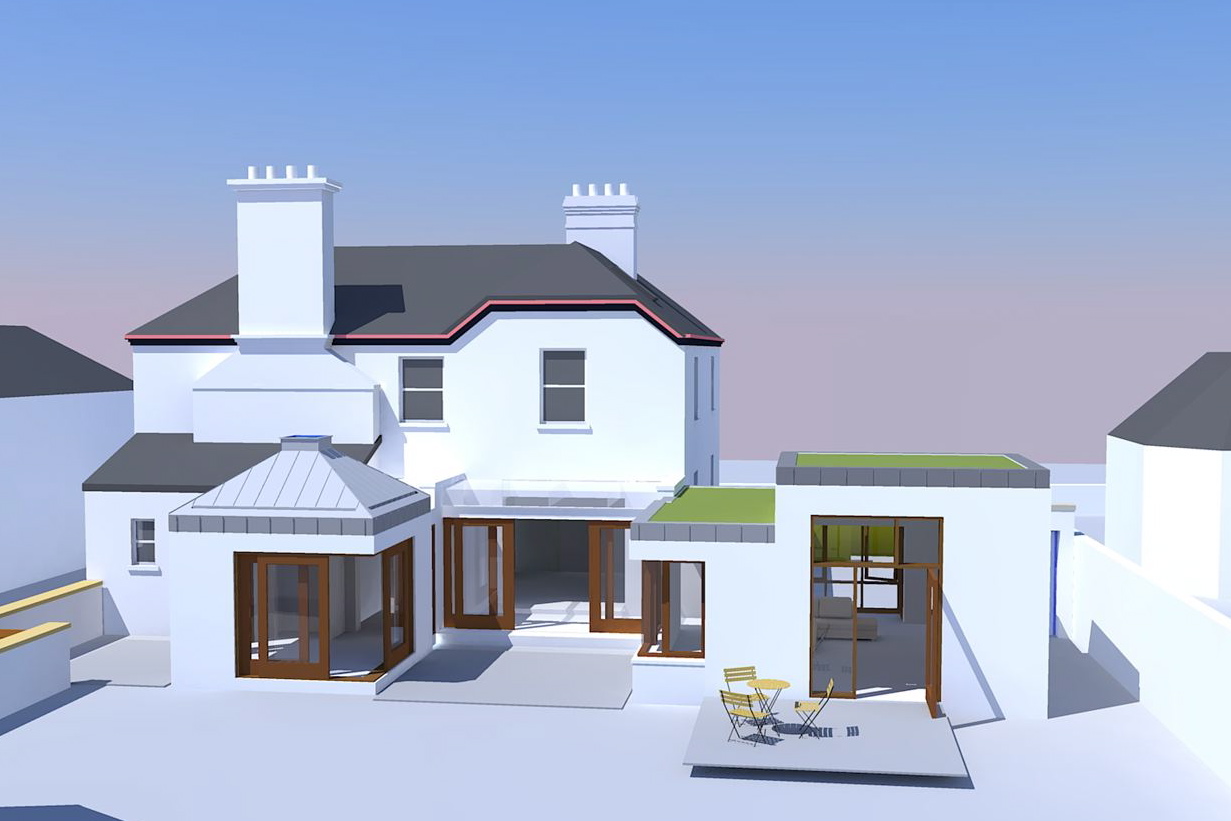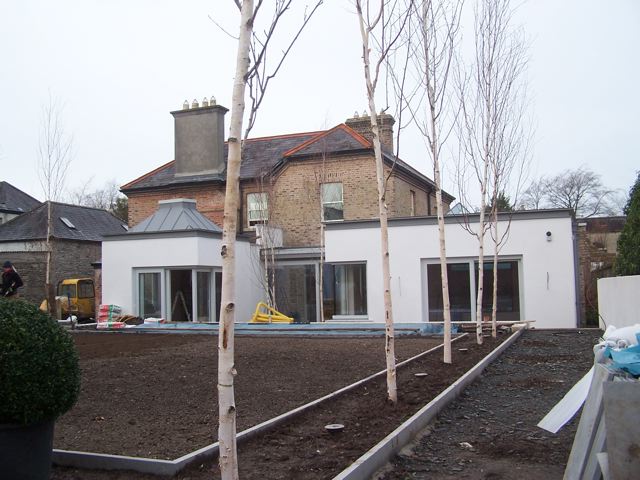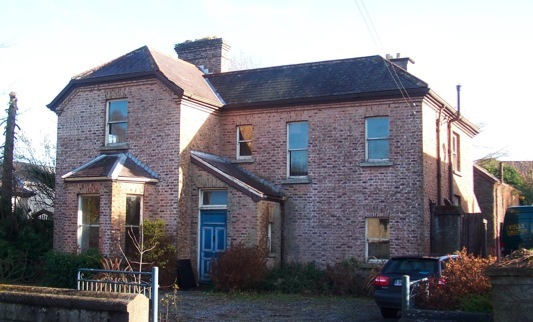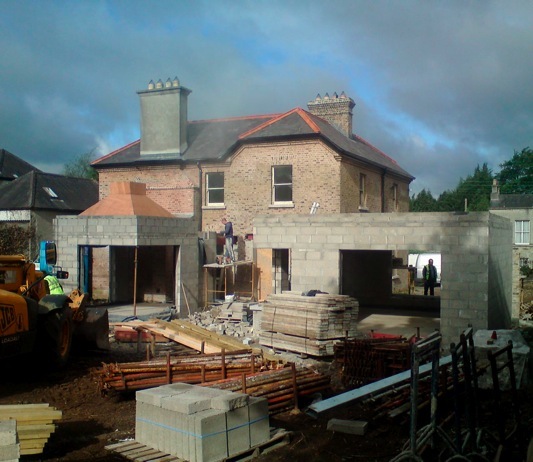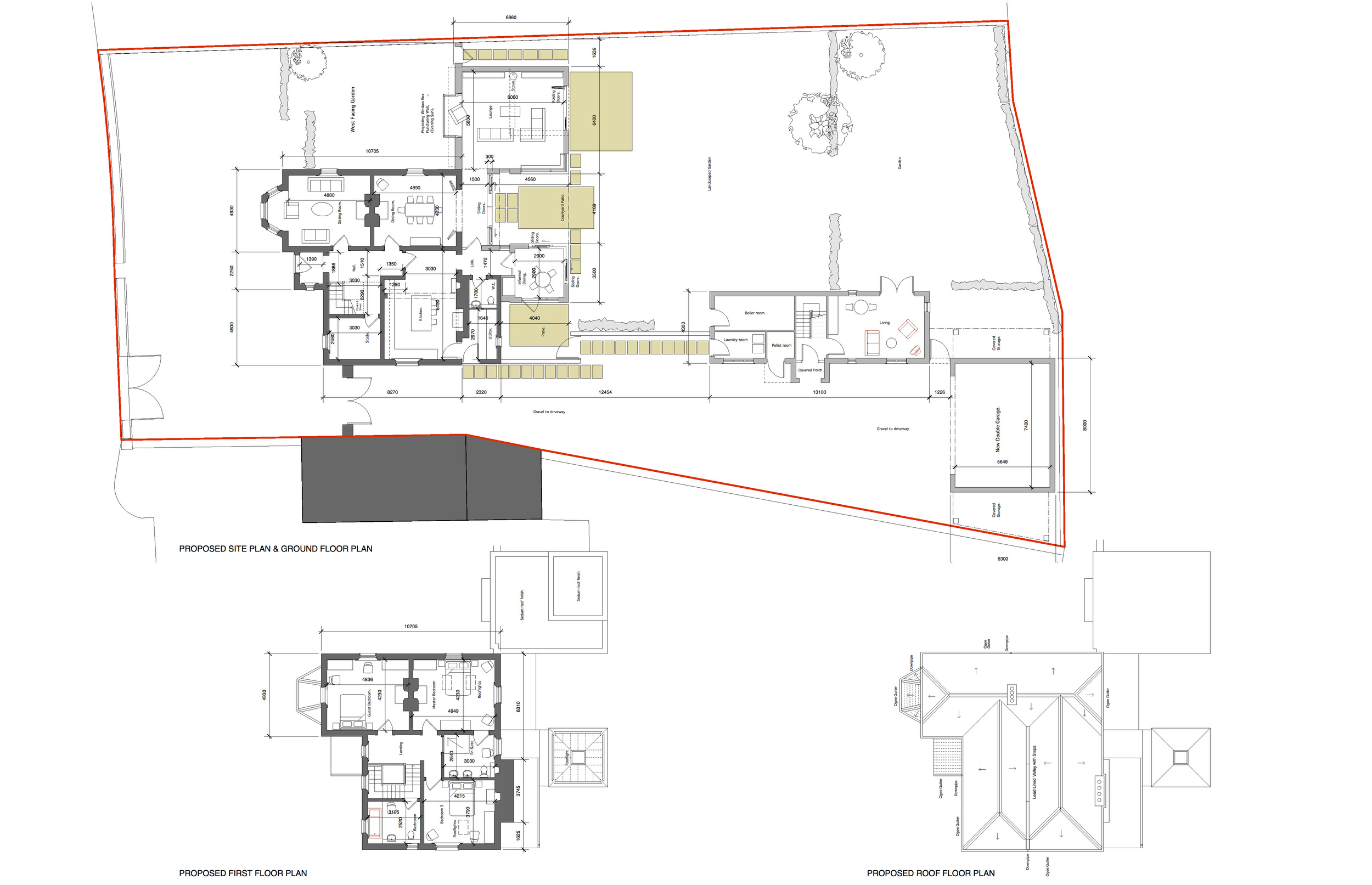Exempted Development Planning Guidelines for your Home Extension
Paul Mulhern
When you are planning any construction works around the house consideration of the planning requirements is critical.
The following information on works exempt from the requirement to obtain planning permission will be of use to those considering extending or renovating their home. As well as extensions it also covers change of use work, converting a garage for domestic use and building a garage, shed or garden building.
This is intended as a practical guide. It is not a definitive legal interpretation of planning law.
For more information you should consult your local planning authority.
A full list of the Schedule 2 Exempted Development Works is available here.
If you are in any doubt as to whether your project would fall under the exempted development provisions you can contact us here to discuss.
It is also possible to request a declaration from the planning authority as to whether development is exempted from the requirement for planning permission or not.
Hofler Architects can prepare this submission for you, which includes:
• Application Form
• The correct fee
• Adequate information to enable assessment of the matter (such as elevational drawings/plans etc. if relevant and a description of the development)
The guidance below does not apply to Protected Structures and not all applies to houses in Architectural Conservation Areas. Talk to us for more guidance in these cases.
1. When do I need planning permission?
Generally, you need planning permission for any development of land or property unless it is specifically exempted from this need. The term development includes the carrying out of works (building, demolition, alteration) on land or buildings, and the making of a material (i.e. significant) change of use of land or buildings.
2. What is exempted development?
Exempted development is development for which planning permission is not required. Categories of exempted development are set out in planning law.
Relevant exemptions in relation to domestic developments are outlined in this leaflet. There are usually certain thresholds relating to, for example, size or height. Where these thresholds are exceeded, the exemptions no longer
apply. The purpose of exemption is to avoid controls on developments of a minor nature, such as small extensions to houses.
3. Can a change of use be exempted development?
Yes. Where a change of use is not “material”, planning permission is not required. (See Q3)
4. What is a ‘material change of use’?
This depends on the circumstances of each situation. Generally, any change of use of a substantial nature which has an impact or potential impact on neighbours or the local community will need planning permission. The planning authority can give advice on whether it considers any particular change of use is significant enough to be “material” for planning purposes.
See Question 19 below for details of how to resolve a question whether a development is or is not exempted.
5. Can I build an extension?
Small scale domestic extensions, including conservatories, do not require planning permission if the extension is to the rear of the house and comply with the following:
• the original floor area of the house is not increased by more than 40 square metres. It is important to note that where the house has been extended before, the floor area of the extension you are now proposing and the floor area of any previous extension, including those for which you got planning permission, cannot exceed 40 square metres;
• for terraced or semi-detached houses, the floor area of any extension above ground level does not exceed 12 square metres, this includes any previous extensions carried out;
• any extension above ground floor level is at least 2m from any boundary;
• any extension does not exceed the height of the house;
• any extension does not reduce the area of private open space, reserved for the occupants of the house, to less than 25 square metres.
There are also rules about the height allowed in such an extension. These are that:
• if the rear wall of the house does not include a gable, the height of the walls of the extension must not exceed the height of the rear wall of the house;
• if the rear wall of the existing house has a gable, the walls of the extension (excluding any gable being built as part of the extension) shall not be higher than the side walls of the house;
• in the case of a flat roofed extension, the height of the highest part of the roof may not exceed the height of the eaves or parapet. In any other case, no part of the new roof may exceed the highest part of the roof of the house;
• a gable is the upper part of a wall (normally triangular), between the sloping ends of a pitched roof.
There are also rules about the required distances between windows in extensions, the facing boundary of the adjoining property and the use of the roof of the extension. These are;
• any windows proposed at ground floor level as part of an extension should not be less than 1 metre from the boundary they face;
• any windows proposed at above ground level should be not less than 11 metres from the boundary they face;
• the roof of any such extension should not be used as a balcony or roof garden.
6. Can I convert my garage to domestic use?
The conversion for use as part of a dwelling house (e.g. as a living room or bedroom) of a garage, store, shed etc. attached to the rear or side of a house is normally exempted development, subject to the 40 square metre limit and conditions as set out in Question 5 above.
Contact us if you are unsure of any of the above conditions in relation to any proposed extension.
7. Can I build a garage?
You can build a garage, carport, shed, greenhouse, kennel for domestic pets etc., as long as it does not extend out in front of the building line of the house and does not exceed 4 metres in height, (if it has a tiled or slated pitched roof), or 3 metres (if it has any other roof type). The floor area limitation for exempted development is 25 square metres.
The structure may not be lived in, used for commercial purposes or for keeping pigs, poultry, pigeons, ponies or horses. Garages, sheds etc. to the side of the house must match the finish of the house. You cannot reduce the open private space, reserved exclusively for the use of the occupants of the house, at the side or rear of the house below 25 square metres.
8. Can I build a front porch?
You can build a porch without planning permission, as long as it does not exceed 2 square metres in area and is more than 2 metres from any public road or footpath. Where the porch has a tiled or slated pitched roof, it must not exceed 4 metres in height, or 3 metres for any other roof type. A front porch within these limits is the only type of development allowed to extend beyond the front wall of the building (the building line) and still remain exempted.
9. Can I erect walls, fences and gates?
Capped walls made of brick, stone or block with a decorative finish, railings and wooden fences, but not a metal palisade or security fences, can be erected as long as they do not exceed 1.2 metres in height in front of your
house or 2 metres at the side or rear. If the wall is made of plain blocks or mass concrete it must be rendered or plastered. Gates and gateways may be built or replaced providing they do not exceed 2 metres in height. You will need planning permission if you wish to make a new or wider access to the public road.
10. Can I build a chimney and a boiler house?
A boiler house or a chimney for a central heating system, or an oil storage tank (up to 3,500 litres capacity), is exempted development.
11. Can I build paths, ponds and patios?
Car parking spaces, hard surfacing, garden paths, garden ponds and patios etc. are exempt once they are not more than 1 metre above or below existing ground level. There are no other limitations to the rear of the house but no more than 2 car parking spaces to the side or front of the house are exempt.
We recommend that you use permeable paving so that surface water can soak into the ground rather than overload the public drainage system.
12. Can I put up a television aerial?
A radio or TV aerial on your roof is exempt once it does not exceed 6 metres in height above the roof. A satellite dish up to 1 metre across and below the top of the roof is exempted development only to the rear or side of the house. Only one dish may be erected on a house. A dish to the front needs permission.
13. Can I carry out internal alteration, external repairs and maintenance?
You can carry out any internal alteration you wish as long as you do not alter the domestic use of the house. External works of repair, maintenance and improvement such as painting or replastering do not need planning permission so long as they do not materially affect the external appearance, thus rendering the appearance inconsistent with neighbouring buildings. You may need approval for certain external alteration e.g. a new connection to a sewer. This exemption does not apply to protected structures, nor to the subdivision of a house into flats or granny flats. Planning permission must be obtained for such works.
14. Can I demolish an old building?
You can demolish without permission a building other than:
• a habitable house, or;
• a protected structure or a proposed protected structure;
• a building in a terrace, or one which is attached to another building in separate ownership.
However, it does not automatically follow that you will get permission to build a replacement.
A habitable house is a house which is:
• used as a dwelling;
• is not in use, but when last used it was a dwelling and is not derelict;
or
• is provided for use as a dwelling but has not been occupied;
• it also includes a building where the last permitted use was as a house, even if it has been in unauthorised use since then.
15. Can I store caravans and boats?
One caravan, one campervan or one boat may be stored in your garden for up to 9 months of the year as long as it is not lived in or used for business purposes.
16. Can I put up advertisements?
You do not need permission for domestic advertisements up to 0.3 square metres in area, such as your house name or number and “Beware of Dog” type signs. If selling or letting your house the size increases to 0.6 metres but only one advertisement is allowed and it may not be left up any longer than 7 days after the sale or letting.
17. Are there any limitations to exempted development?
All forms of development which are normally exempted lose this status and require planning permission if they:
• contravene a condition of a planning permission;
• endanger public safety by causing a traffic hazard or obstructing the view of road users;
• build forward of the building line (except in the case of small porches);
• involve a new or wider access to a public road;
• affect a building, feature, site, character of landscape, view of special amenity value or special interest, etc.,(check your local development plan);
• obstruct a public right of way;
• are not wholly related to the use of the house for domestic purposes;
• involve development within a special amenity area;
• involve development to a protected structure;
• include any works to, or changes to, an unauthorized structure, or one where there is an unauthorised use.
(“Unauthorised” means without the benefit of planning permission or exempted development status).
18. Do the exemptions apply to apartments?
The exemptions listed above at 5, 7,8, 10, 11, 12 and 15 do not apply in the case of flats or apartments and the provision of car parking is only exempt when to the rear.
19. Where can I get more information on exemptions?
The full list of exempted developments is set out in the Planning Acts and Regulations. The planning authority can advise on whether they consider planning permission is necessary, or not, in a particular case (See note on Declarations above). If you disagree with the planning authority on whether planning permission is needed, you can obtain a formal ruling by referring the decision to An Bord Pleanála on payment of the appropriate fee.
Further information is available directly from the Board at 64 Marlborough Street, Dublin 1, Telephone (01) 8588100.
20. What happens if exemption limits are exceeded?
The limits must be observed and the planning authority has powers to stop the development if they are breached. If, due to an oversight an error is made, you should apply to the planning authority for permission to retain the
work done. This is generally known as “retention” permission. It does not automatically follow that this will be granted. This fee for a retention application is 3 times more than the standard fee and you may have to take
down, alter or rectify work done, which can be costly.
Prosecution for breaches of planning law can result in heavy fines or imprisonment. You may also find it difficult to sell property which does not comply with planning requirements. If buying property check that the building
itself and any extensions or alterations comply with planning requirements or you, as the new owner, may be liable to enforcement action.
21. Should I consult the planning authority before carrying out exempted development?
If you have any doubts or queries on any planning aspect you can contact the planning authority. Refer also to our comments on seeking a Declaration of Exemption or contact us directly.
See also Question 23 in relation to Building Regulations. You can also contact SPACIOUS Architects for advice on all planning and development matters.
22. Should I consult any other bodies?
You should contact your local E.S.B. office if your proposed works are near existing electricity lines, if there is a question of clearance heights under power lines or if the construction work will bring anyone within reach of the electricity supply to your house. In fact, you must do so where any overhead lines come within 6 metres of the construction works.
23. Do Building Regulations Apply?
Your development must be in accordance with all applicable current building regulations. These regulations set out the basic design and construction requirements and apply to all new buildings, extensions, alterations and certain changes of use of existing buildings. Details of the building regulations and of the associated procedures are available in PL.11 - A Guide to the Building Regulations. Further information may be obtained from your local authority.
You may also need other types of approval e.g. making a new connection to a sewer. Contact your local authority in such cases.
24. Should I notify my neighbours beforehand?
This is not a legal requirement for exempted development. However, it is in your interest to let neighbours know about work you intend to carry out to your property. They are likely to be as concerned about work which might affect them as you would be if the roles were reversed. You may be able to meet some of your neighbour’s worries by modifying your proposals. Even if you decide not to change, it is usually better to have told your neighbours before the building work starts. If you or your contractor need to go on to a neighbour’s property, you should obtain his or her consent before doing so. Alterations or additions to your house may make it more vulnerable to burglary.
Any development that involves works to a shared or party wall will require special attention, discussion and agreement with your neighbour.
The law governing the planning system is set out in the Planning and Development Acts 2000 and 2001 and the Planning and Development Regulations 2001 to 2002. These may be purchased from the Government
Publications Sales Office.
They are available online here
____
Read an eloquent client testimonial here and what the Irish Times have said about some of our work here.
If you are planning to extend, renovate or build a new dwelling - Talk to us about your project. You can contact us at any time here.
Return to our homepage or view our blog articles index page.
SPACIOUS Architects, Dun Laoghaire, Co. Dublin.
Tel: 01-5585205

